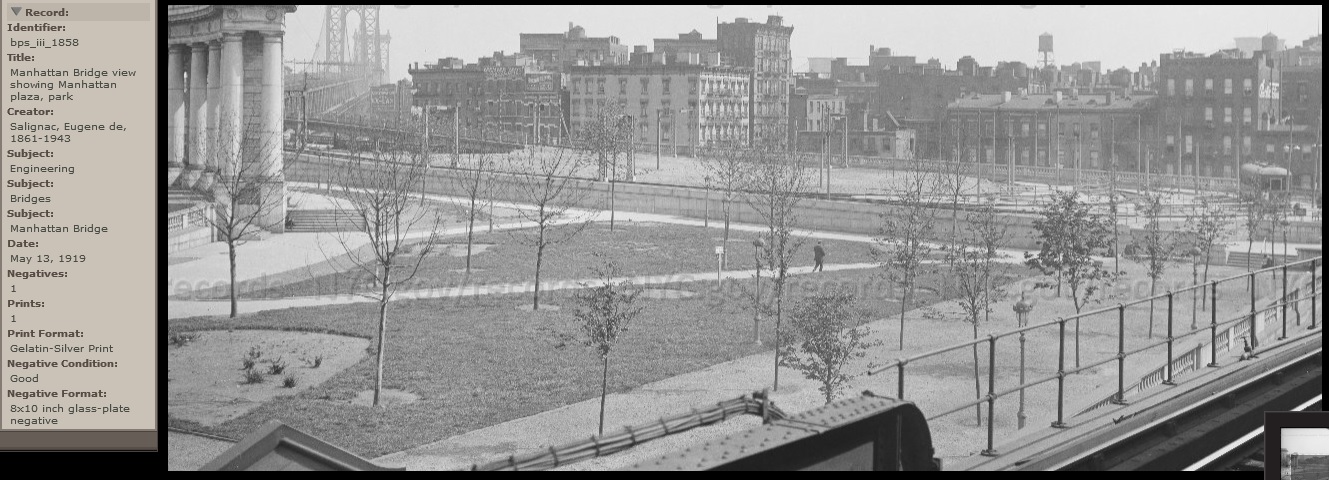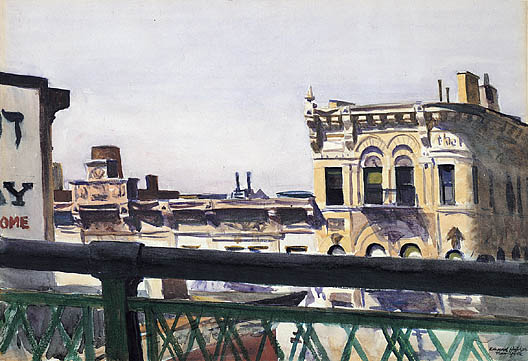 | |||
 | |||

|
MANHATTAN BRIDGE LOOP - EDWARD HOPPER This is a picture of Edward Hopper's MANHATTAN BRIDGE LOOP from 1928. Marie Fotini of France, PopSpots chief European correspondent, and I have been looking for this location off and on for about two years. But recently, while we were researching a photo by Jacob Riis taken near the same location, Marie ran across a photo that solved the mystery all in one fell swoop, by discovering a photo that captured almost the exact same view that Hopper had painted 87 years ago. 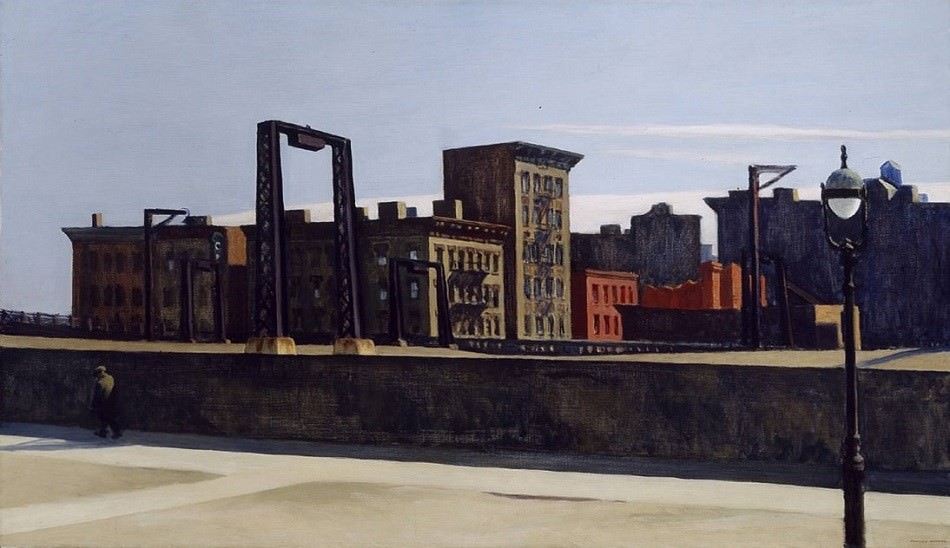
This is a general view of the Manhattan Bridge that connects downtown Manhattan to Brooklyn. 
We had been looking in the area around Division Street because there are similar buildings to those in the background of Hopper's painting there. But, not having found a match, we put off the search for awhile. 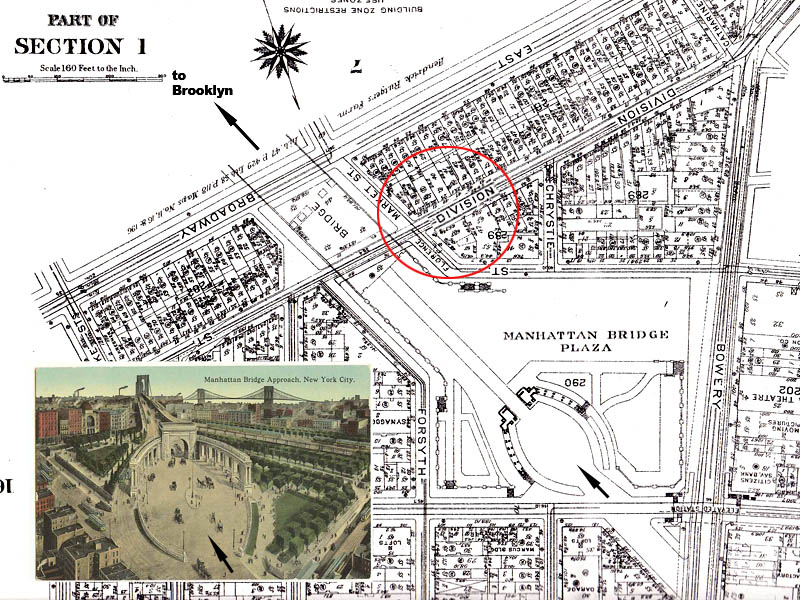
Then, while searching the area for some pictures similar to those taken by Jacob Riis, from his book, How the Other Half Lives, Marie came across the photograph indicated below in the New York Municipal Achives website. She was intrigued by the view of the buildings to the right of the bridge entrance. 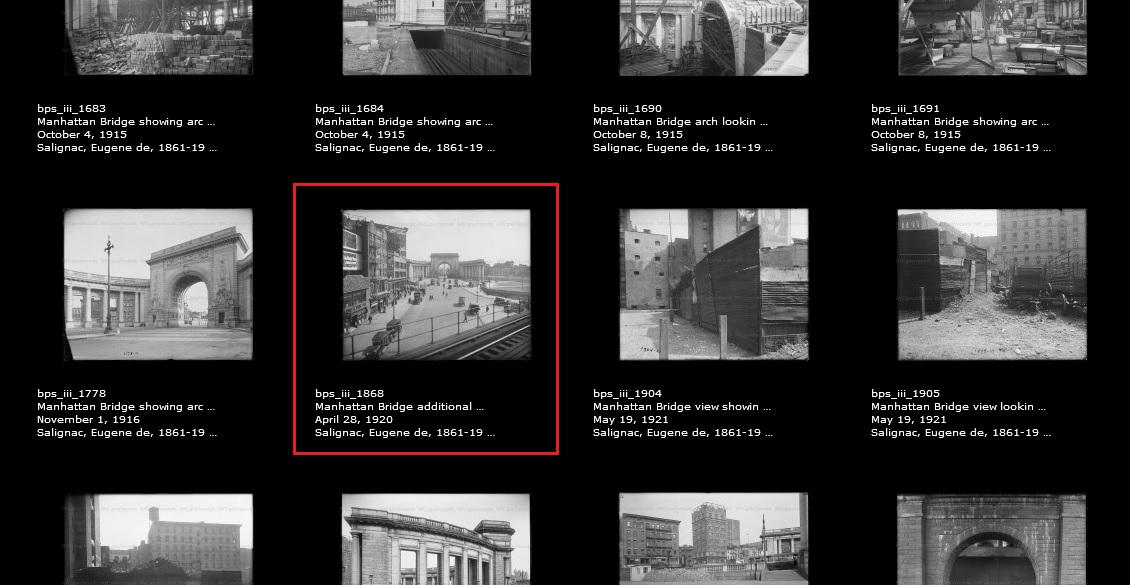
Here's a wider view of the photo. 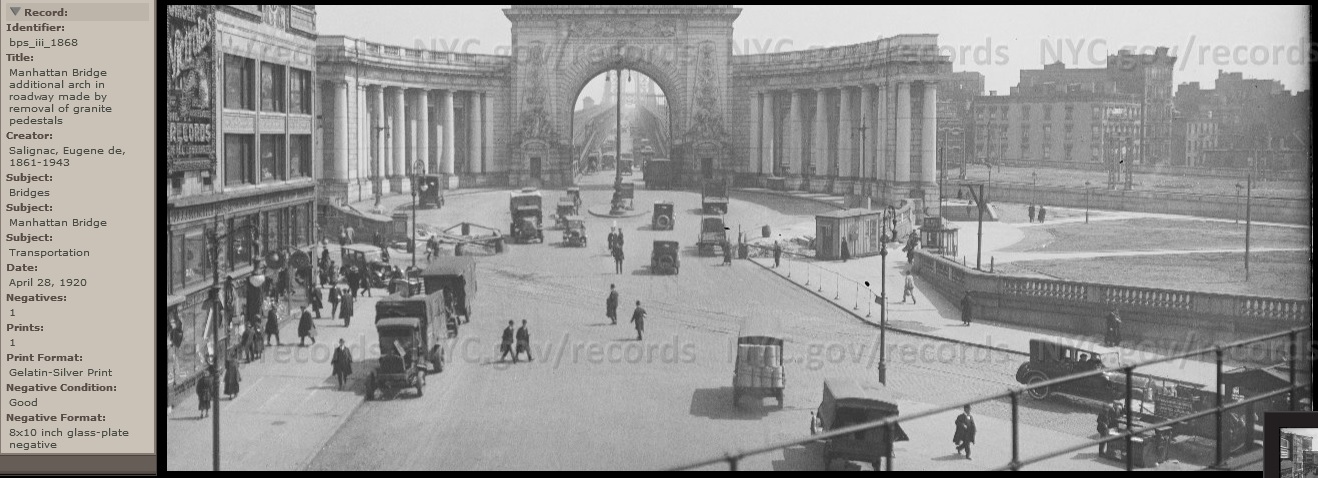
I've darkened this version, taken out the text, and zoomed into the bridge entrance. But now, let's look to the right. 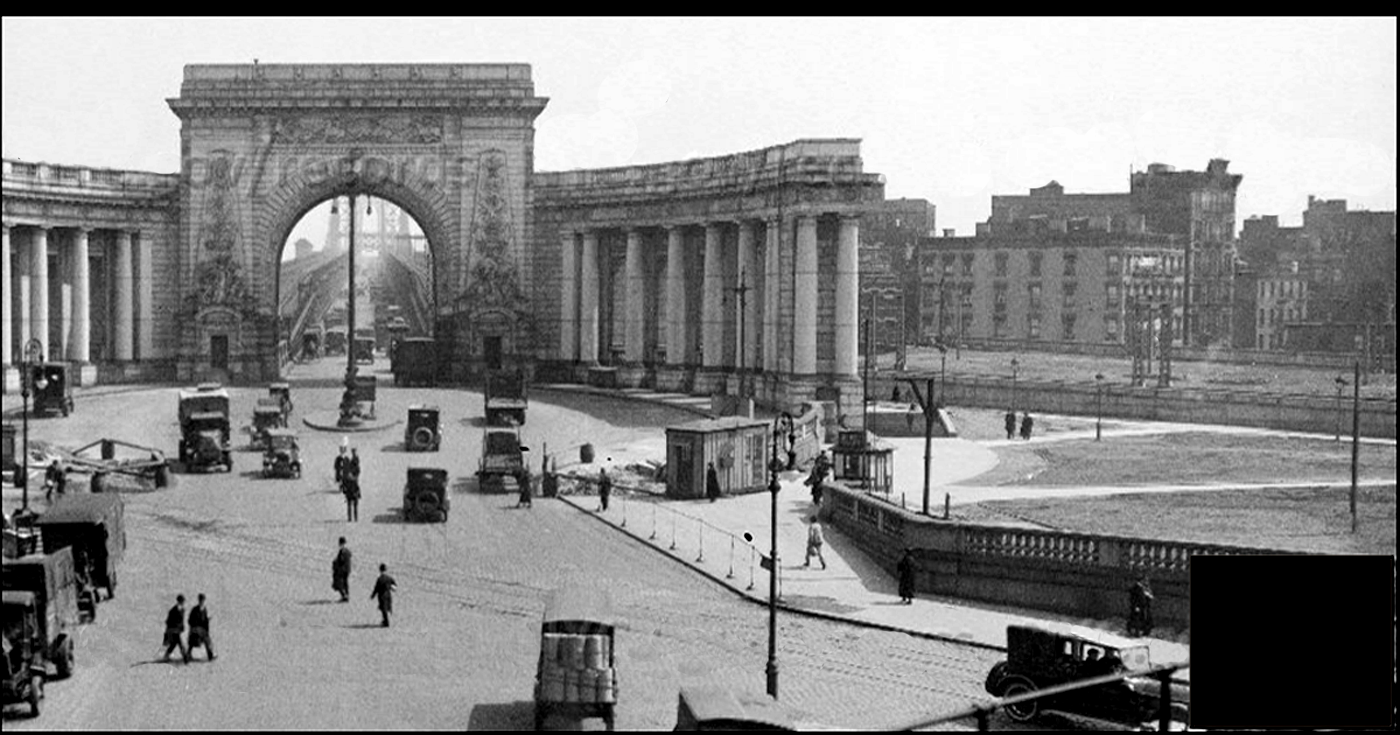
The view to the right of the bridge matches Hopper's painting almost perfectly. 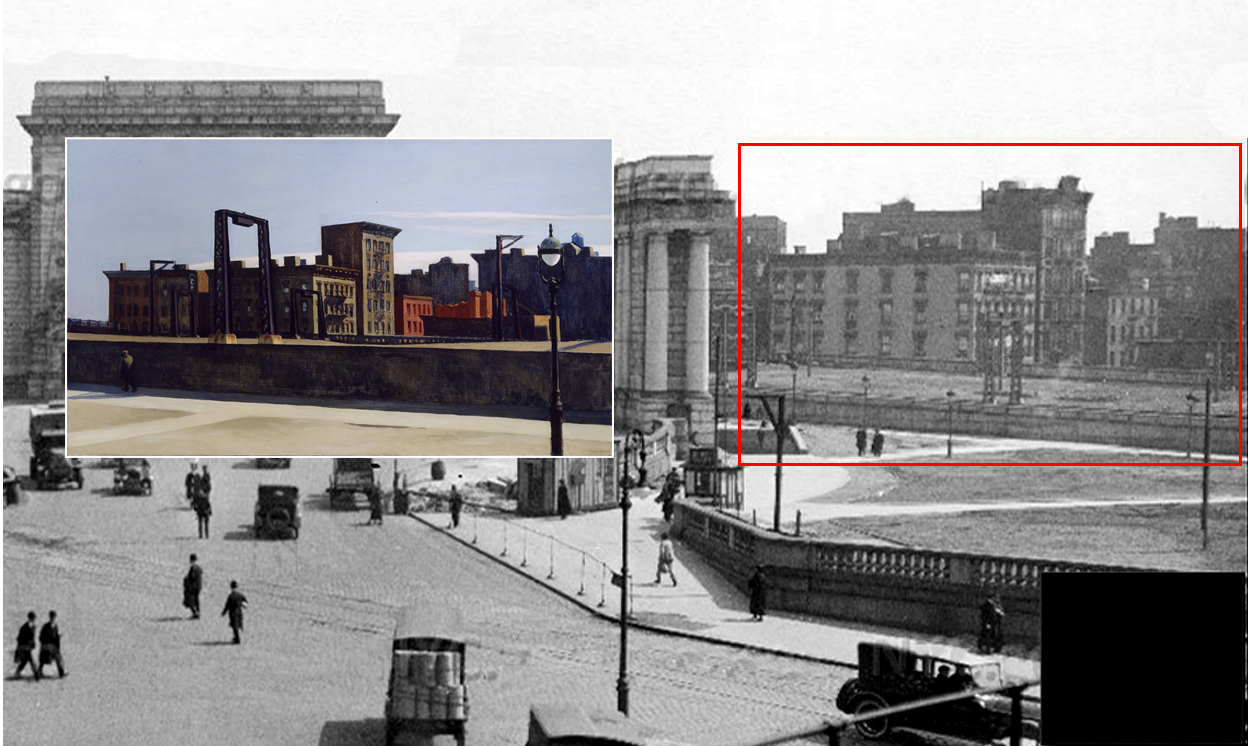
Here's the view all by itself. The dark upside down U-shaped object in the center is called a "gantry." A gantry is a bridgelike, overhead structure supporting equipment such as railroad signals, lights, or cameras. 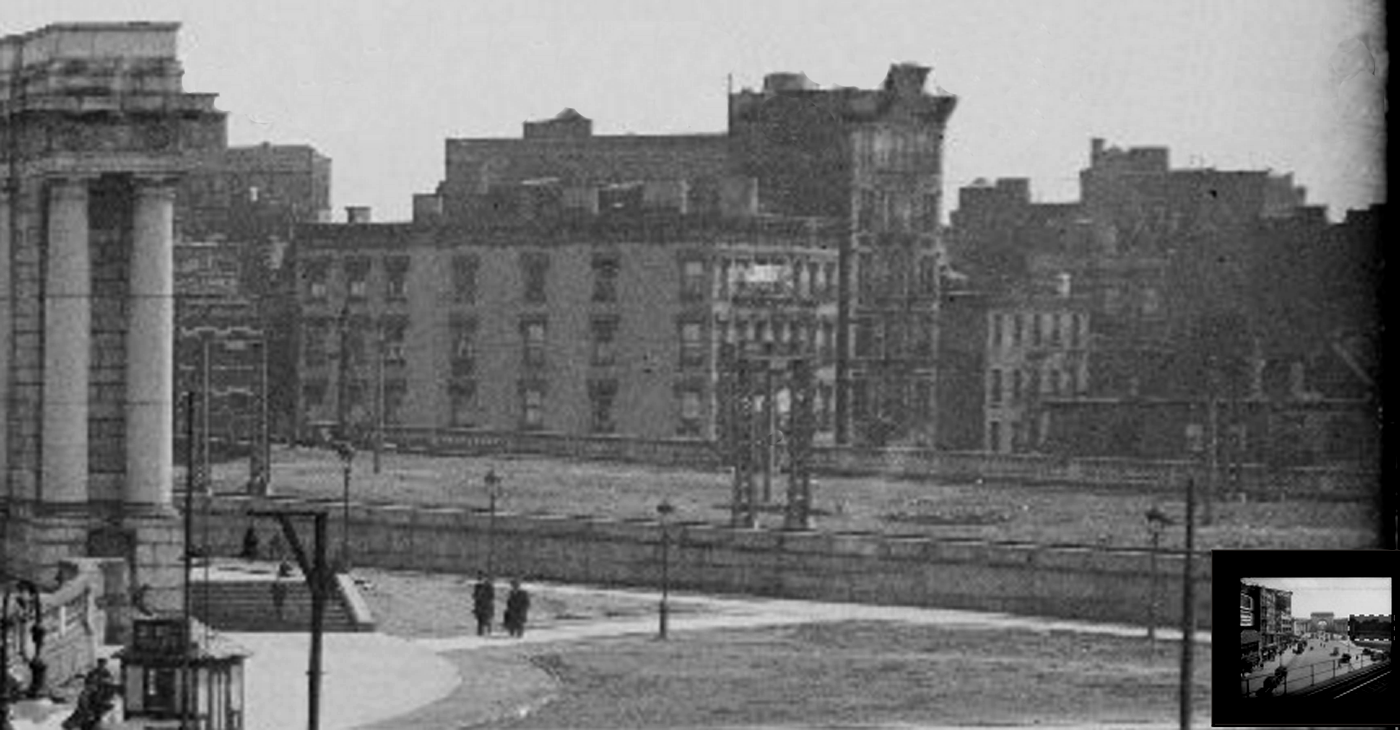
In this view Marie color-coded some of the objects and structures like the gantry, the streetlights, chimneys, and the short wall at the bottom that match up in each shot. 
Here's the shot without the markings. 
Another comparison. 
Here are those two buildings in the postcard we looked at earlier. All those green trees in the foreground and the buildings in the red circle will eventually be replaced by a large apartment building called Confucius Plaza. 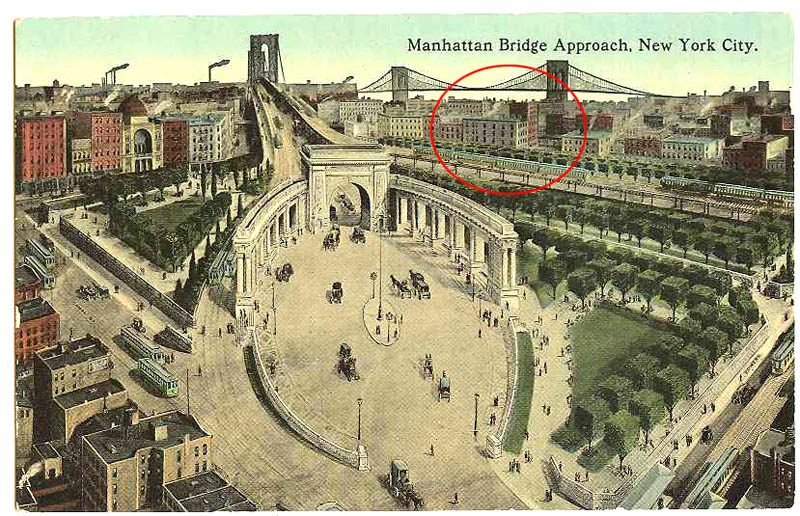
Before we zoom in on those two buildings, please note the gap between the two buildings in the distance. 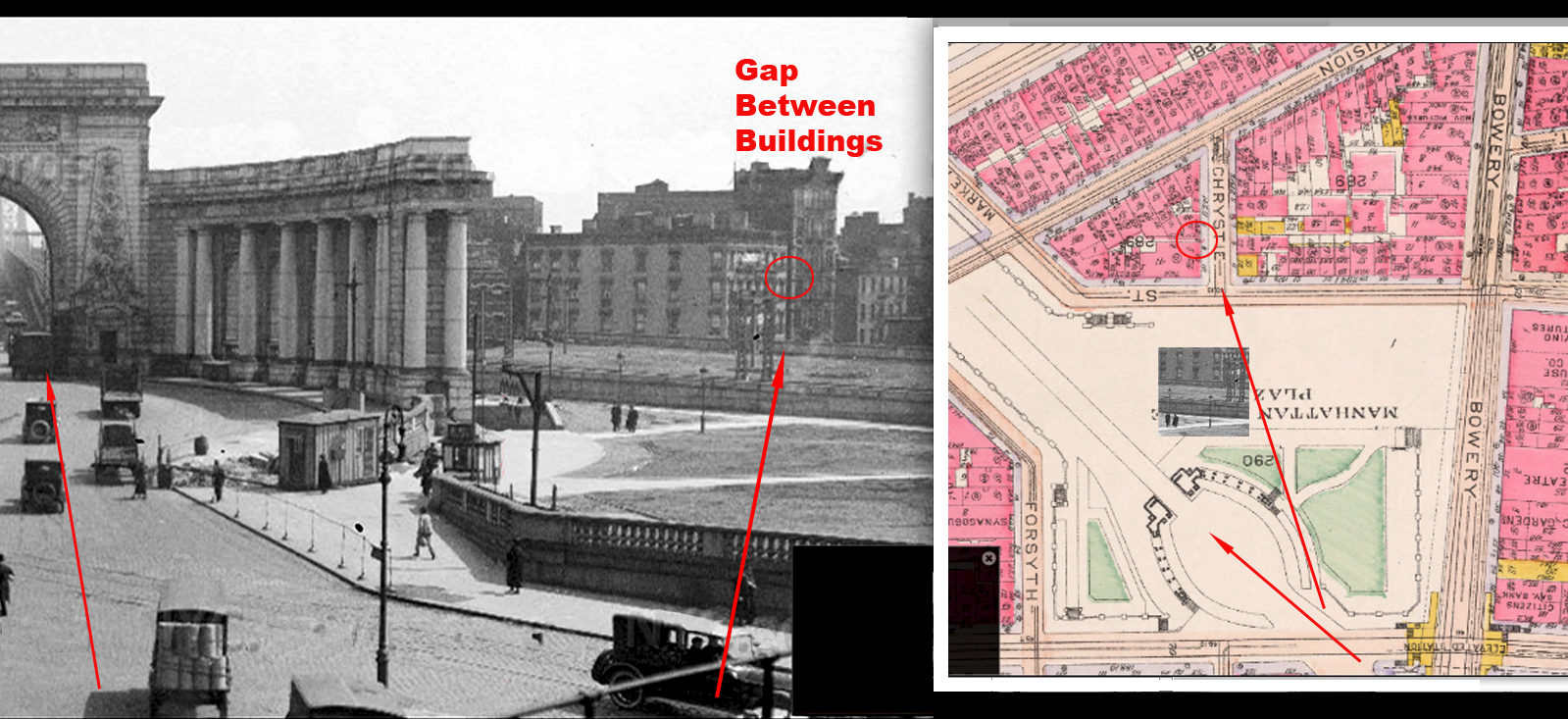
Here are the two buildings. You can see the gap between them. The building that says "corner building with chimneys" is located at the northwest corner of Chrystie and Bayard. 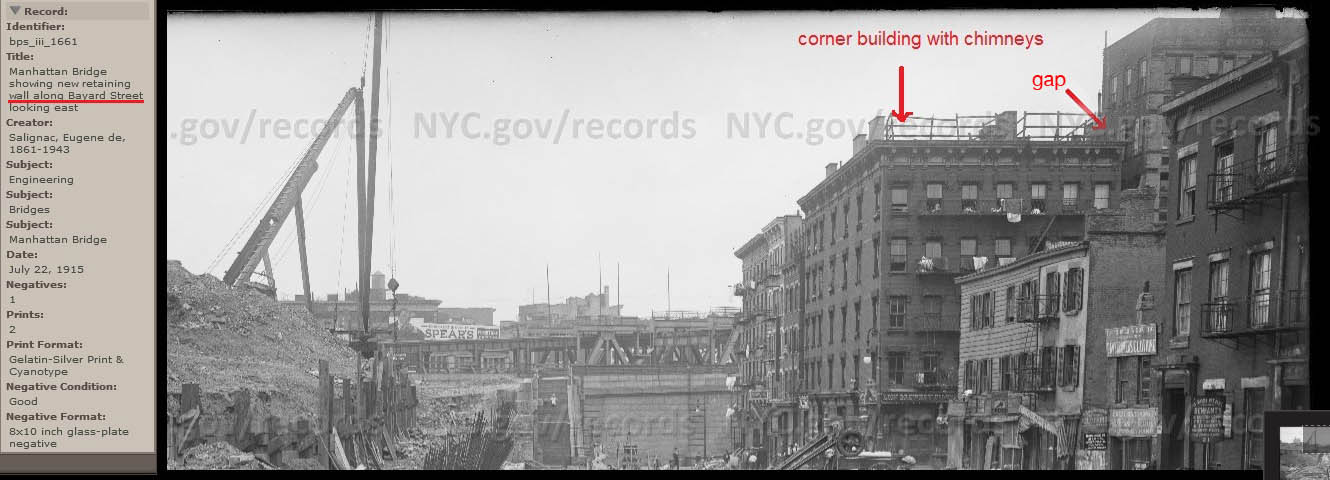
There's a smaller building opposite that building which is also of interest. 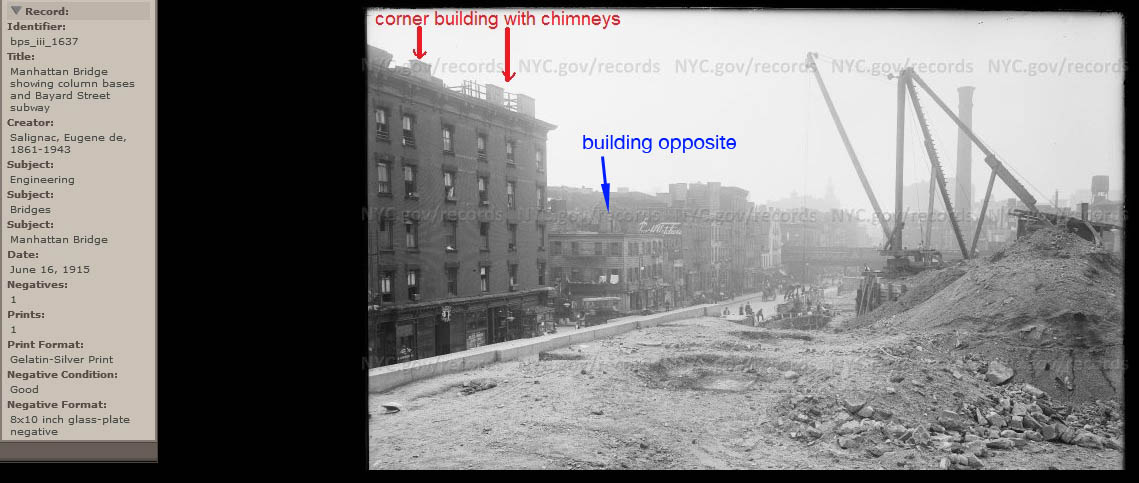
The roof of that building is in Hopper's painting. Although you can't make out the funny "bumpy" wall" of Hopper's picture, you can make a sloped roof in the back. 
Here's another view. 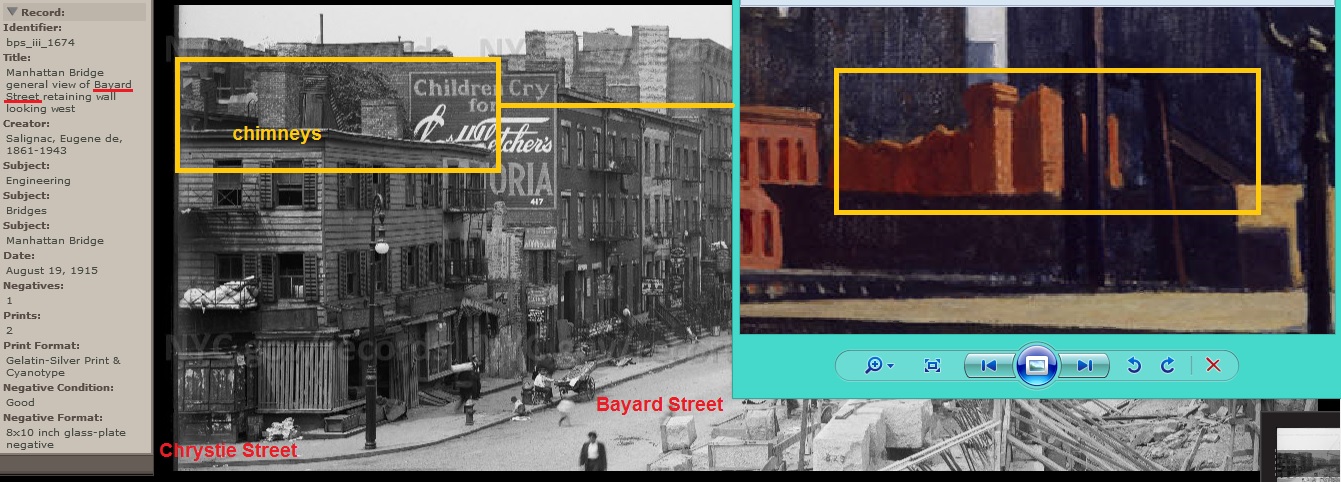
Here is another shot of the scene from the NYC Municipal Archive,* taken from a higher view. *(archive # bps_iii_1858. Taken in 1919)
If you look closely at the right you can see the trolley car that just came to Manhattan from Brooklyn turning around and heading back over the bridge. The trolley is riding on a rail loop (see the red dotted lines in the photo below). Thus, the name of the painting: Manhattan Bridge Loop. 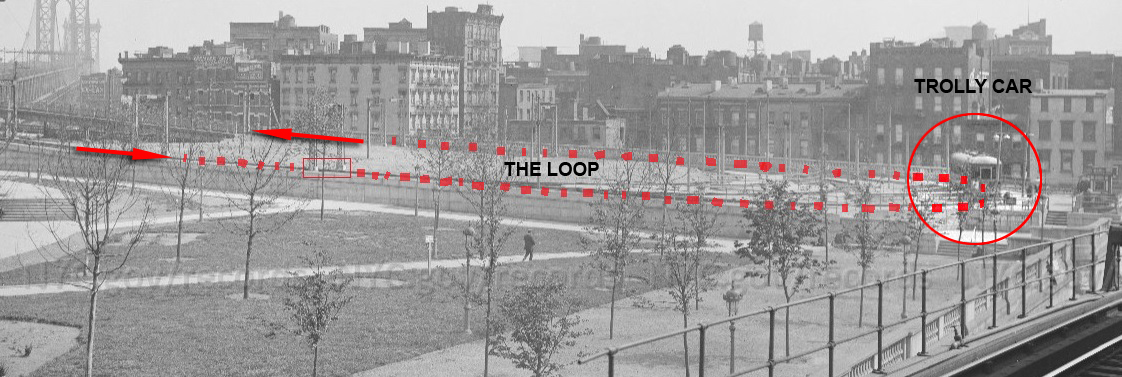
The loop itself is pretty much lost in Hopper's painting. He did something similar in his painting "View from the Williamsburg Bridge" (PopSpot #31) where he foreshortened all the traffic lanes on the bridge so much that you couldn't see them. That is why we can't see much of the trolly loop from the angle that he painted the scene. 
Now, let's zoom in on that view. 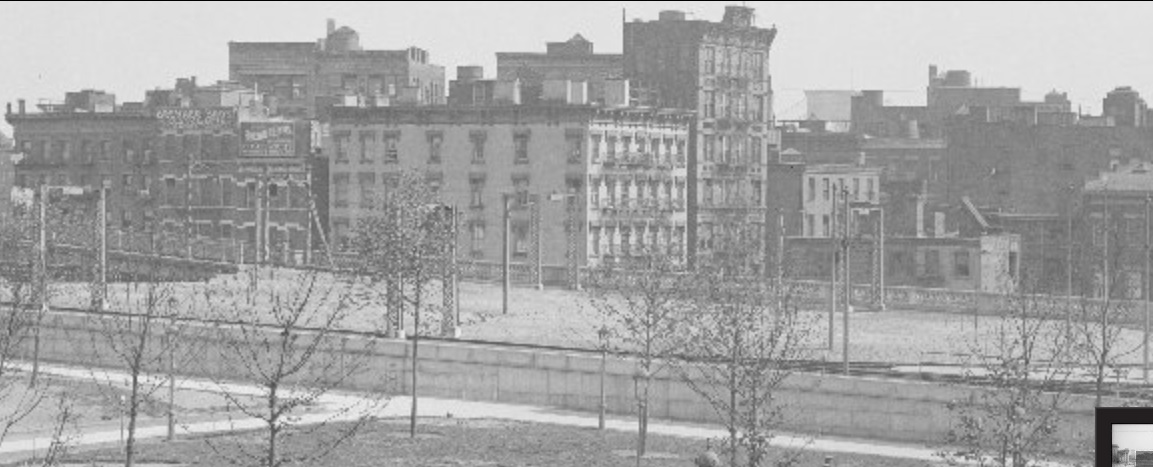
Hopper was probably standing near the balustrade when he painted the scene. 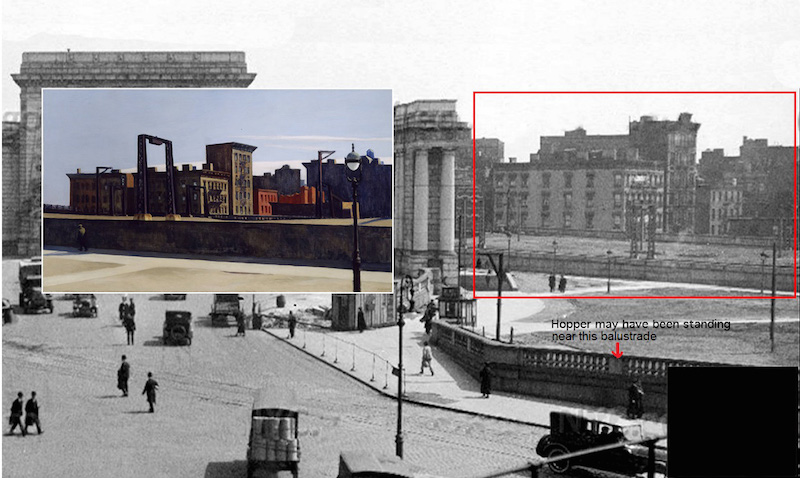
These kids are playing in the center of the Loop. You can see similar angled telegraph wire poles as the one on the right in the Hopper painting. 
Here's one of Hopper's sketches. There is more detail to the gantry than in the painting. 
Here's a similar lamp from a photo of the Loop area from the NY Public Library. 
This photo shows the stairs leading up to the bridge/loop area. 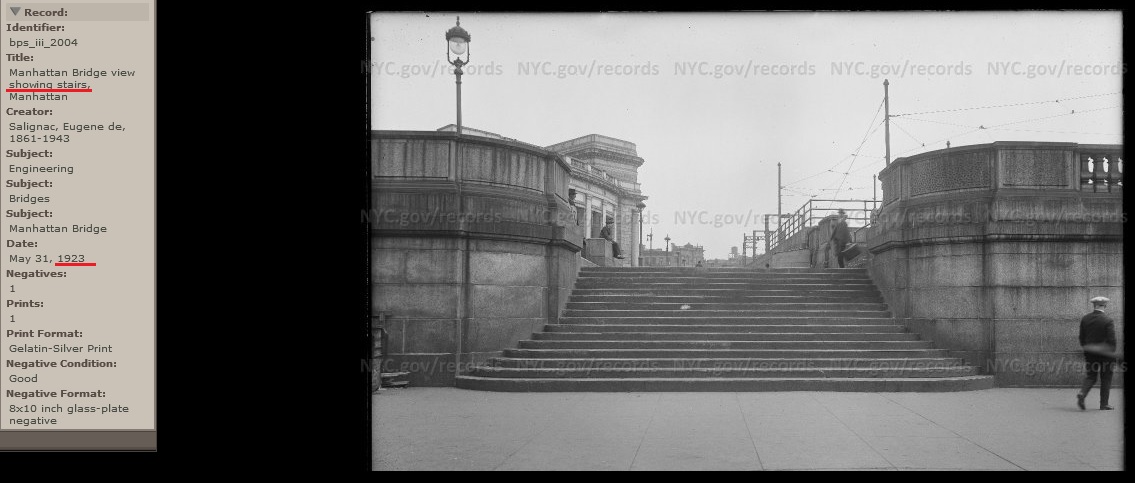
In this closer shot, Marie has indicated the lamppost, the wall, and the gantry from the Hopper picture. It's like you are right in the picture. 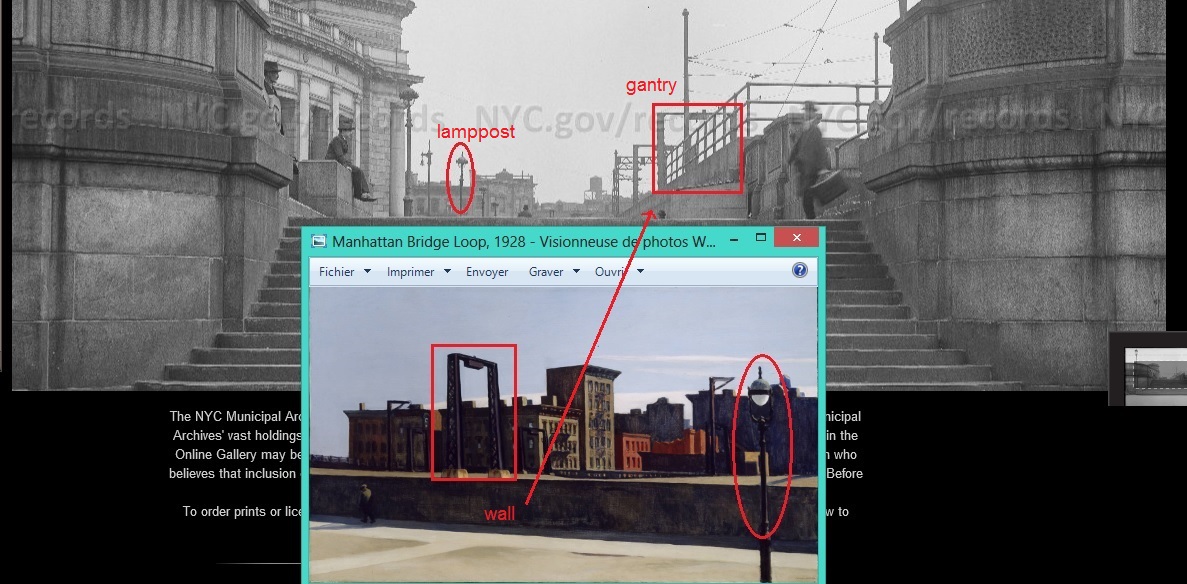
The Loop area and the buildings in Hopper's painting have all been replaced by a federally-subsidized housing project called Confucius Plaza. The 44-story residential building was built in 1976. 
(photo from Museum of the City of New York) This comparison photo shows how Confucius Plaza replaced the Loop and the buildings around Bayard and Chrystie that were in Hopper's painting. (click photo to enlarge it) 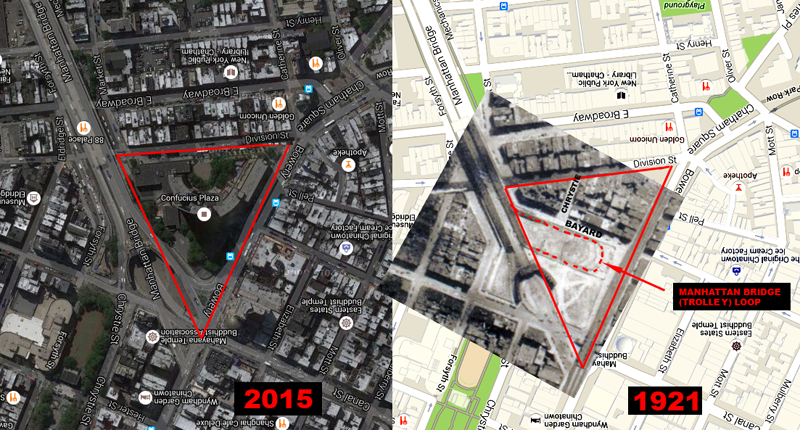
Thanks for viewing. Here's a self-portrait of Hopper from between 1925-1930, about the time he painted Manhattan Bridge Loop in 1928. 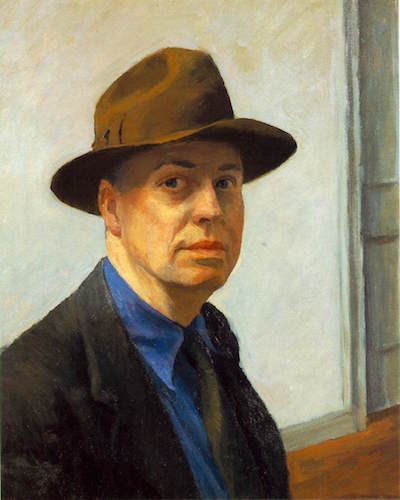
(Whitney Museum of Art) For more on this, please see the ADDENDUM following the "The End" sign. 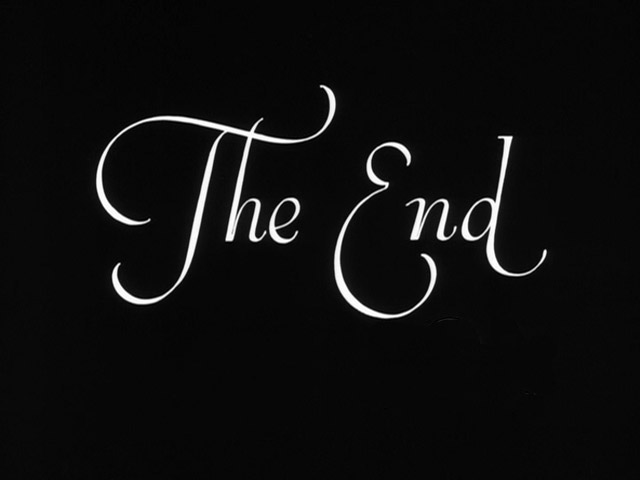
ADDENDUM #1 Another painting by Hopper of the Manhattan Bridge, named, aptly, Manhattan Bridge (1925) was sent in by a PopSpots reader . Marie was also able to track down photos from the Municipal Archive of its location. (These picture are shrunk to 800 pixels wide. To see the wide ones larger, drag them to your desktop.) 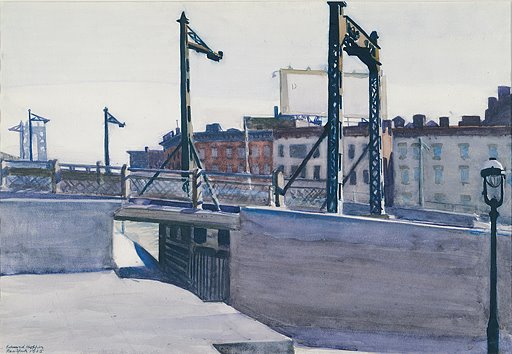
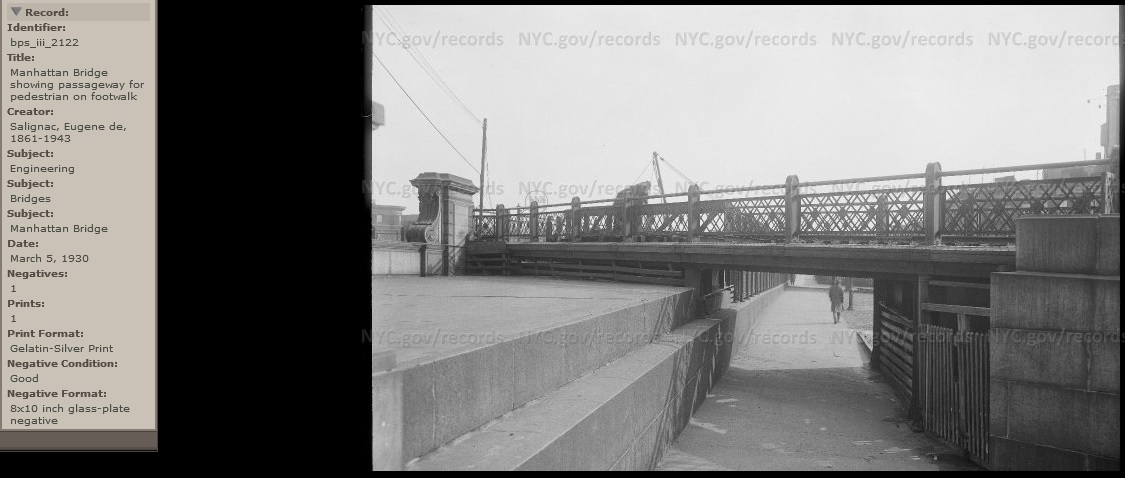
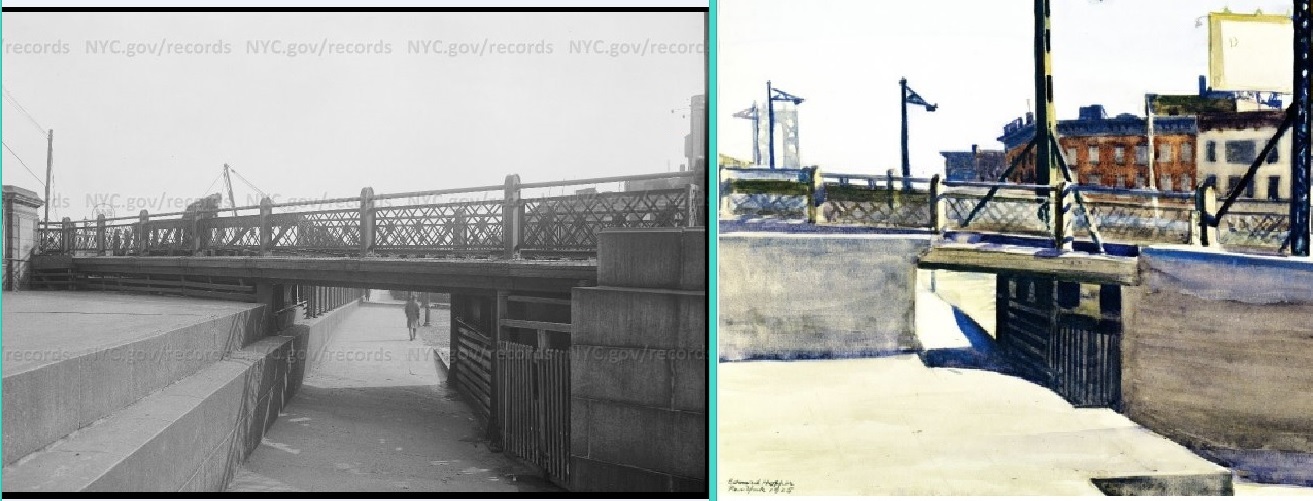
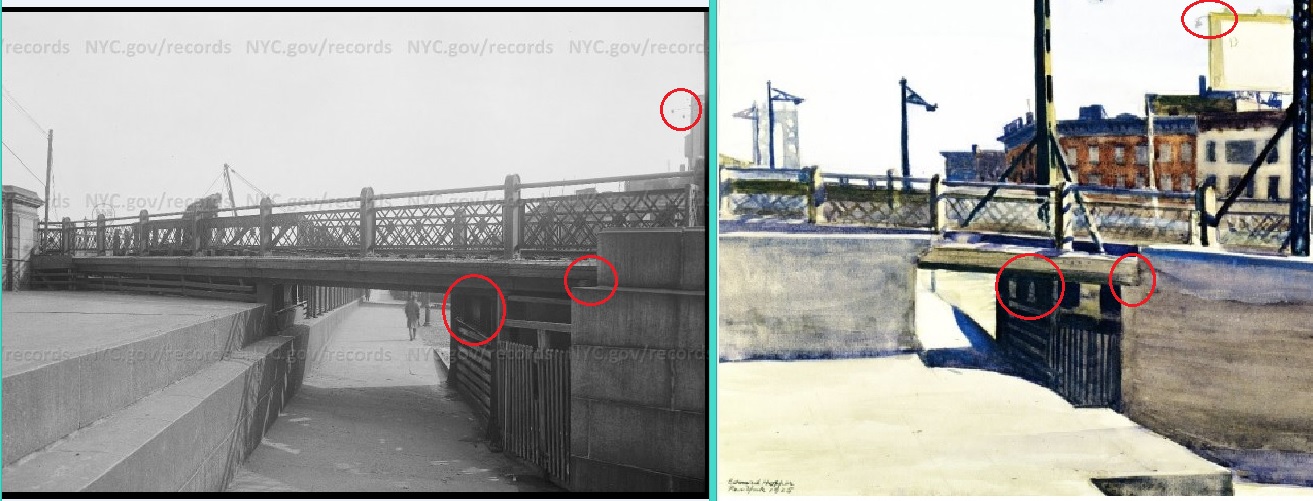
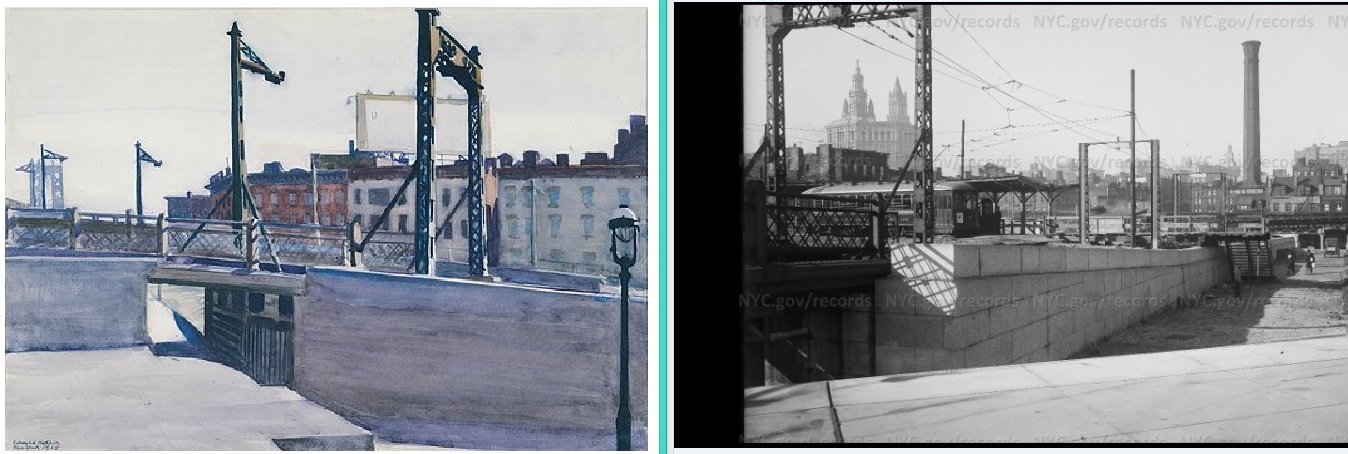


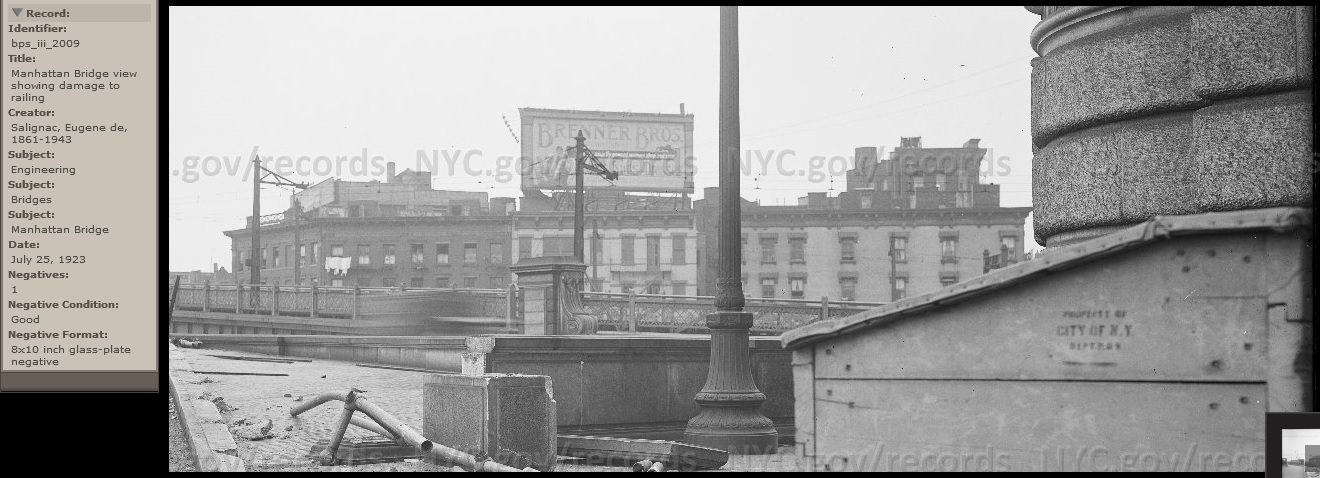
ADDENDUM #2 - Edward Hopper's "The Lily Apartment" (1926) Hopper painted this watercolor while standing on the Manhattan Bridge. To read more about this painting, please click here.
END OF THE ADDENDUMS (For now)
|
||

